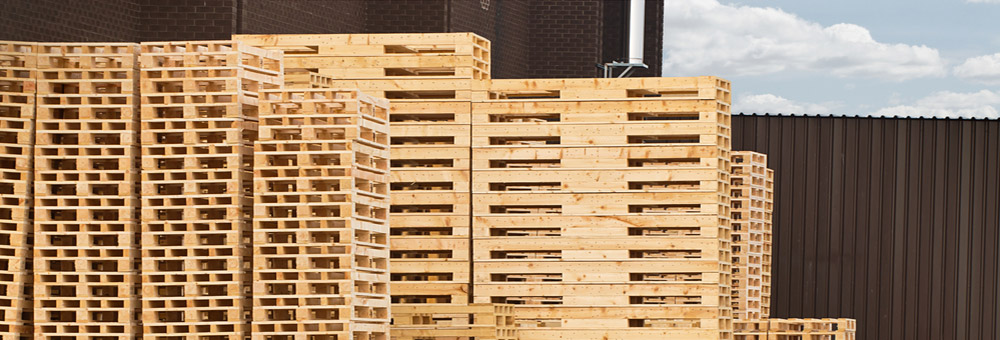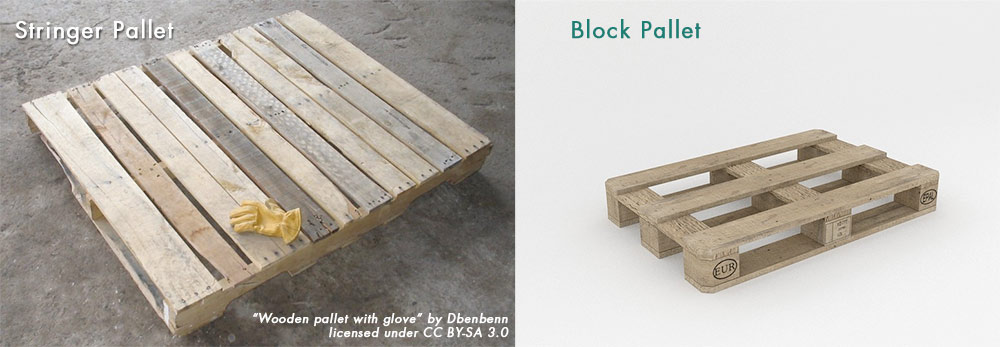
Pallet Pricing Volatility Arrives With Santa Claus
Businesses that rely on pallets to ship their goods during the holiday season may be in for some sticker shock, since the cost of pallets always rises when consumers go into their holiday buying frenzy.
Just as surely as Santa Claus travels by sleigh – soaring through the sky led by eight tiny reindeer – to deliver presents to every good girl and boy, pallet prices are higher during the holiday season.
The reason for the bump in pallet prices during the holiday season is as old as St. Nick himself – supply and demand. With pallets in high demand during the busy shopping season, businesses must either pay more for used wood pallets or buy more expensive new pallets to move their products across the country.
Pallet prices increase not only during the holidays, but anytime there is a huge spike in consumer demand. Since the holiday season can sometimes account for 40% or more of some business’ annual sales, it also tends to be the most expensive time to buy pallets.
Demand Reflects the Economy
Demand in the pallet market reflects the economy, since it serves as a yardstick for the volume of goods being traded.
Pallets are usually more expensive from September through January 1. Any time there is a slowdown in the economy on a local, regional or national scale, it results in reduced demand and slightly lower prices. Transporting pallets is expensive, so local and regional markets can be impacted by some transportation issues even though national markets are not.
Some of the current demand problems date back to 2009 when the pallet industry nose-dived with the economy. It put many pallet producers out of business. Even though the economy recovered, the pallet producing industry has yet to reach pre-2009 levels. As of today, there are fewer companies producing fewer quality pallets.
To understand the dynamics of pallet pricing, it is important to understand that it is related to pallet cores. Pallet cores are damaged or used 40×48 inch pallets still suitable for repair and reuse.
How Pallet Core Availability Impacts the Cost of Pallets
Pallet core supplies have been dwindling for years, and just like finished pallets, demand for cores is particularly high from September through the holidays.
During the early decades of the pallet recycling industry in the 1970s and 1980s, pallet core surpluses were available for free or at a relatively low cost. As a result, pallet recycling businesses were often very profitable.
In recent decades, increased competition has led to recyclers bidding competitively for large pallet core supplies, squeezing profit margins. Today, it is not uncommon for large generators of cores such as distribution centers to sell them. Thrifty recyclers can still count on a few places to find pallet cores, such as small businesses, construction sites, distribution centers, hotels, restaurants, ports, cruise ship terminals, manufacturing or processing plants, trucking terminals, landfills and recycling companies.
Price Still Drives Selection of Pallets
According to a survey from Modern Business, purchase price is the most important consideration for pallet purchase, cited by approximately 60% of respondents. Cost per use was in second place, cited by 37% of respondents. Other leading factors included strength, durability, customer requirements, reusability and availability.
Some alternative materials saw increases. The use of plastic pallets rose 4% and metal pallets was up 3%. These findings are consistent with other reports that note fewer pallets are being discarded each year. However, wood pallets still dominate product sales.
Plastic and Metal Pallets Increase in Popularity
This year, 58% of respondents cited “compliance and cleanliness/safety” as the top reason they chose plastic pallets. Other reasons cited for plans to use more plastic pallets were because they were more sustainable than wood pallets and last longer.
The Modern Business survey also noted that many respondents said their plans to use metal pallets are increasing, with 4% of respondents saying they expected to start using metal pallets in the next 12 months. Of the respondents already using some metal pallets, 8% say they expect to increase metal pallet use.
Cost of Pallets Comparison: Stringer Pallets vs. Block Pallets
Looking at trends in large retailer’s use of pallets, both Walmart and Costco have decided to phase out the use of stringer pallets in favor of block pallets. While stringer and block pallets may look similar, block pallets are more versatile when it comes to moving pallet loads around the warehouse. By design, block pallets have full four way entry while stringer pallets have only two way or partial four-way entry. Partial four-way entry means that a pallet can be handled from all four sides with a forklift but from only two sides with a pallet jack.
How this trend towards block pallets will impact future pricing models for both block and stringer pallets is uncertain.
Options to Rising Used Pallet Prices
Companies which have historically relied on used pallets that are now suffering from rising costs due to a pallet shortage do have a few alternative options.
- The first option is to simply buy new instead of used. With the price of used pallets steadily increasing, the distance between new and used is getting smaller all the time.
- Another consideration to reduce the cost of pallets may be a combo pallet. Hardwood pallets have always been the standard for new pallets, especially in the eastern United States. However, some manufacturers are now offering new pallets made from a mix of used components and new lumber. Combo pallets generally cost less than new pallets.
- Some shippers are creating their own managed pools. For those who are shipping within a 100 to 200 mile radius who can get the pallets back, a private pool may make sense. For manufacturers shipping across country, however, the freight costs may be prohibitive.
- Ikea recently announced plans to discontinue using wooden pallets in favor of lightweight cardboard pallets to save money. It expects to save almost $200 million on the move. The thinner, lighter, and cheaper cardboard pallets will be purchased from local suppliers.The pallets can support the same amount of weight as the wooden pallets. However, they can only be used once, after which they are discarded and recycled. Transportation costs may be reduced, but it is unclear if the cardboard pallets will really be better in terms of sustainability.
- After paying high prices during the holiday season, some companies may start to consider stockpiling pallets to avoid the rising cost of pallets. This of course depends upon whether the company has sufficient storage areas to devote to pallet inventory.
So how does a company keep from running into the same problems with pallet demand year after year?
The best solution is to partner with a reliable pallet vendor – like Direct Supply – who can help manage pallet inventory, thereby lowering the cost of pallets. By providing the vendor with production schedules, the pallet vendor can make sure that pallet considerations are never put on the back burner. It will allow pallet inventory to be more efficient and consistently stocked. Plus, a good vendor will be able to warn customers when the price of pallets is projected to increase.
Pallets Finally Get Respect
It wasn’t that long ago that few people gave pallets a second thought. They were one of the costs of doing business and, since they weren’t that expensive, few people really looked at them as a significant business expense. They were just a platform for a warehouse product. Those days are long gone.
Although wood pallets are still taking the lion’s share of the market, now that companies have realized how much pallets can impact their bottom line, they are considering a variety of new materials, shapes and sizes.
With all that said, demand and supply basics have not changed. For the foreseeable future, pallet demand will be high and supply will be low during the holiday season. It will be important for businesses moving forward to be flexible as new technologies continue to change the pallet market. It will also be important to have a reliable vendor – like Direct Supply, Inc. – who will be viewed as part of the team.
Contact Direct Supply today to find out how we can help you manage your pallet inventory!




